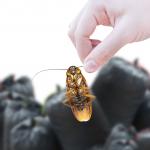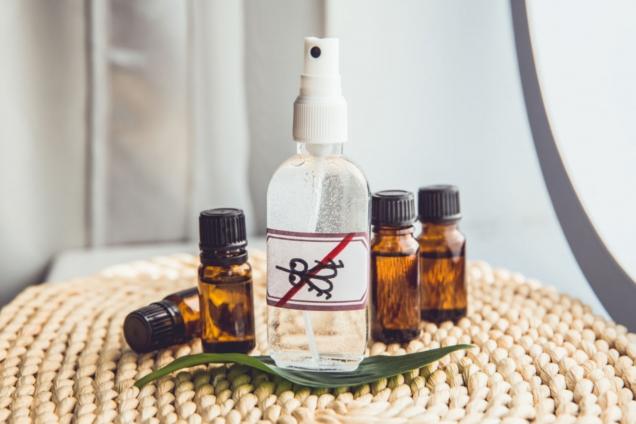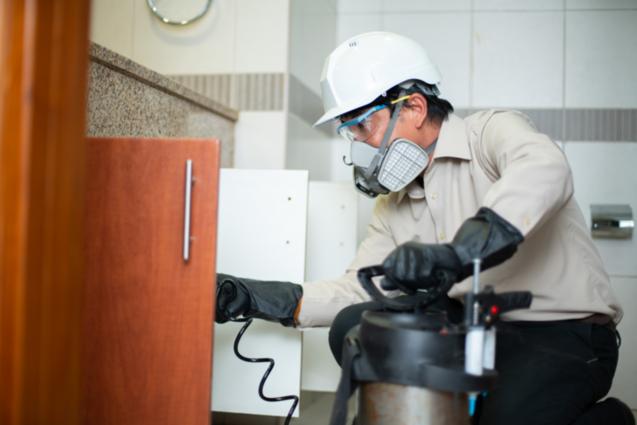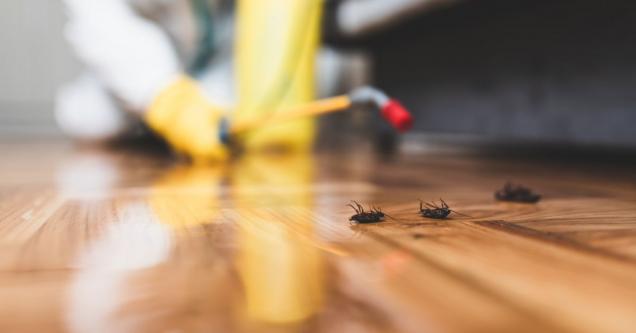
Top Ten Pesky Pests in Australia
By Pro Pest Control Sydney|May 19, 2022
What You Need To Be Aware Of?
You love your home. And so do a wide variety of insects and other pests. While some are harmless, numerous species threaten human health, and many can damage buildings and belongings.
Unsure what type of creatures could be lurking inside and around your home?
Read on to learn more abouvbt the top ten Australian pests and some handy tips to control and prevent them from invading your property.
1. Ants
Ants may seem harmless enough, but they can do a lot of damage once inside your home. They can destroy electrical wiring and plastic, and some, such as bull ants have a nasty bite. Among the common ant species in Australia are carpenter ants, flying ants, sugar ants, coastal brown ants and green ants. Call your Sydney pest control company If you ever find them marching into your property. Let the experts handle your ant problem.
Control: Sprays, powders and baits.
Prevention: Clean up food and liquid spills immediately, block off entry points and store food in airtight containers when possible.
2. Cockroaches
There are approximately 450 species of cockroaches in Australia, making them one of the country´s most common household pests. The three main types that infest homes are the German cockroach, the American cockroach and the Australian cockroach. These scavenging insects that resemble beetles thrive in places with abundant food, water and shelter, i.e., kitchens. They are known to spread diseases such as salmonella and gastroenteritis.
Control: Sprays, powders and baits.
Prevention: Good sanitation in the kitchen, limit where you eat, get rid of entry points and store food in sealed containers.
3. Fleas
Fleas are stubborn critters that can be difficult to get rid of once they enter a property. They attach themselves to pets and any person in a home and can cause discomfort and itchiness. Fleas can also transmit parasites to humans and animals. The flightless insects reproduce quickly. A single female can lay up to 40 eggs a day. One of the most common fleas in Australia is the cat flea.
Control: Topical and oral solutions for pets. Applying insecticides in areas where you can find fleas such as carpets and behind beds and furnishing.
Prevention: Regularly treat all pets entering your home with a suitable flea treatment and regularly wash your pet´s bedding.
4. Ticks
Ticks are another tiny menace. There are approximately 70 species in Australia. They feed on animal blood and transmit diseases through their bites, such as Queensland tick typhus and Flinders Island spotted fever.
Control: Non-toxic pesticides.
Prevention: Cut back vegetation in the garden and mow the lawn regularly. Clear your garden or yard of dead leaves.
5. Bed Bugs
Bed bugs are nothing but bad news, oval-shaped pests that primarily feed on human blood leaving bite marks on the skin. They lurk in mattresses and between the folds of sheets. The most obvious sign of an infestation is blood stains on your bed linen.
Control: Steam treatments and placing bed linen in a sealed bag and leaving it in a freezer for several days.
Prevention: Inspect beds and mattresses regularly, fill cracks in floors and walls and use a bed bug mattress protector.
6. Moths
Moths are a textile pest that can damage fabrics, upholstery, clothes, carpets and curtains. According to estimates there are approximately 22,000 moth species in Australia. The most common types that can be pests in and around the home include the tapestry moth, the brown house moth and the webbing clothes moth.
Control: Clothes moths – washing clothes on high heat to kill larvae. Carpet moths - carpet moth traps, insecticide and making your own treatment with baking soda and vinegar. Food moths - discard infected foodstuffs. If unsure whether something is infected, place items in the freezer for several days to kill off eggs.
Prevention: Hang herbs in your wardrobes, properly wash and store items and clean your home regularly.
7. Rodents (Rats and Mice)
Australia is home to around 60 different types of rats and mice. They pose a significant health risk to you and your family and are known to spread an array of diseases. These include plague, salmonellosis and leptospirosis. They tend to live in holes and pipes and can also cause significant property damage by gnawing through wooden beams, materials and electrical wires (which can cause fires).
Control: Rodent traps inside the home and baits and poison outside.
Prevention: Ensure your home and garden are clutter free, keep foodstuffs in containers with tight fitting lids and place outdoor rubbish in secure bins.
8. Silverfish
The small, silver-coloured bugs are harmless to human health but can cause damage in the home by feeding on paper and fabrics. This common pest hides during the day and is active at night.
Control: Repellents, insecticides and store-bought traps.
Prevention: Reduce humidity in the home, seal grain products and cut back on the clutter.
9. Spiders
With an estimated 10,000 known spider species spread across a variety of habitats, Australia is arachnid central. The country is known for having some of the most venomous and biggest spiders globally. Some spider bites can cause excruciating pain, while others can be fatal. These pests can live for several years and are attracted to homes for warmth and to prey on insects attracted to lights.
Control: Thorough house cleaning with a vacuum cleaner, swatting, sticky traps and organic pesticides.
Prevention: Seal cracks in doors and windows, keep your home clean and turn off outdoor lights if you don’t need them for security.
9. Termites (White Ants)
Termites cause hundreds of millions of dollars’ worth of property damage each year. One in four Australian homes will be infested by the wood-destroying insects at some point. The creatures are specialists at staying hidden. They can go undetected for years while feeding on your wooden structures.
Control: Termiticide barriers, physical barriers, termite baits and termiticides.
Prevention: Remove stumps and dead wood from near your home, seal common pest entry points such as cracks, eliminate pipe leaks and remove any standing water outside your home.
Final Thoughts
Pest invasions don´t have to be an inevitable part of life. With control measures in place, you can keep the critters and creepy crawlies at bay. However, if the invaders make their way in and you´re unable to eliminate them, it´s best to use the services of professional pest controllers.
You love your home. And so do a wide variety of insects and other pests. While some are harmless, numerous species threaten human health, and many can damage buildings and belongings.
Unsure what type of creatures could be lurking inside and around your home?
Read on to learn more abouvbt the top ten Australian pests and some handy tips to control and prevent them from invading your property.
1. Ants
Ants may seem harmless enough, but they can do a lot of damage once inside your home. They can destroy electrical wiring and plastic, and some, such as bull ants have a nasty bite. Among the common ant species in Australia are carpenter ants, flying ants, sugar ants, coastal brown ants and green ants. Call your Sydney pest control company If you ever find them marching into your property. Let the experts handle your ant problem.
Control: Sprays, powders and baits.
Prevention: Clean up food and liquid spills immediately, block off entry points and store food in airtight containers when possible.
2. Cockroaches
There are approximately 450 species of cockroaches in Australia, making them one of the country´s most common household pests. The three main types that infest homes are the German cockroach, the American cockroach and the Australian cockroach. These scavenging insects that resemble beetles thrive in places with abundant food, water and shelter, i.e., kitchens. They are known to spread diseases such as salmonella and gastroenteritis.
Control: Sprays, powders and baits.
Prevention: Good sanitation in the kitchen, limit where you eat, get rid of entry points and store food in sealed containers.
3. Fleas
Fleas are stubborn critters that can be difficult to get rid of once they enter a property. They attach themselves to pets and any person in a home and can cause discomfort and itchiness. Fleas can also transmit parasites to humans and animals. The flightless insects reproduce quickly. A single female can lay up to 40 eggs a day. One of the most common fleas in Australia is the cat flea.
Control: Topical and oral solutions for pets. Applying insecticides in areas where you can find fleas such as carpets and behind beds and furnishing.
Prevention: Regularly treat all pets entering your home with a suitable flea treatment and regularly wash your pet´s bedding.
4. Ticks
Ticks are another tiny menace. There are approximately 70 species in Australia. They feed on animal blood and transmit diseases through their bites, such as Queensland tick typhus and Flinders Island spotted fever.
Control: Non-toxic pesticides.
Prevention: Cut back vegetation in the garden and mow the lawn regularly. Clear your garden or yard of dead leaves.
5. Bed Bugs
Bed bugs are nothing but bad news, oval-shaped pests that primarily feed on human blood leaving bite marks on the skin. They lurk in mattresses and between the folds of sheets. The most obvious sign of an infestation is blood stains on your bed linen.
Control: Steam treatments and placing bed linen in a sealed bag and leaving it in a freezer for several days.
Prevention: Inspect beds and mattresses regularly, fill cracks in floors and walls and use a bed bug mattress protector.
6. Moths
Moths are a textile pest that can damage fabrics, upholstery, clothes, carpets and curtains. According to estimates there are approximately 22,000 moth species in Australia. The most common types that can be pests in and around the home include the tapestry moth, the brown house moth and the webbing clothes moth.
Control: Clothes moths – washing clothes on high heat to kill larvae. Carpet moths - carpet moth traps, insecticide and making your own treatment with baking soda and vinegar. Food moths - discard infected foodstuffs. If unsure whether something is infected, place items in the freezer for several days to kill off eggs.
Prevention: Hang herbs in your wardrobes, properly wash and store items and clean your home regularly.
7. Rodents (Rats and Mice)
Australia is home to around 60 different types of rats and mice. They pose a significant health risk to you and your family and are known to spread an array of diseases. These include plague, salmonellosis and leptospirosis. They tend to live in holes and pipes and can also cause significant property damage by gnawing through wooden beams, materials and electrical wires (which can cause fires).
Control: Rodent traps inside the home and baits and poison outside.
Prevention: Ensure your home and garden are clutter free, keep foodstuffs in containers with tight fitting lids and place outdoor rubbish in secure bins.
8. Silverfish
The small, silver-coloured bugs are harmless to human health but can cause damage in the home by feeding on paper and fabrics. This common pest hides during the day and is active at night.
Control: Repellents, insecticides and store-bought traps.
Prevention: Reduce humidity in the home, seal grain products and cut back on the clutter.
9. Spiders
With an estimated 10,000 known spider species spread across a variety of habitats, Australia is arachnid central. The country is known for having some of the most venomous and biggest spiders globally. Some spider bites can cause excruciating pain, while others can be fatal. These pests can live for several years and are attracted to homes for warmth and to prey on insects attracted to lights.
Control: Thorough house cleaning with a vacuum cleaner, swatting, sticky traps and organic pesticides.
Prevention: Seal cracks in doors and windows, keep your home clean and turn off outdoor lights if you don’t need them for security.
9. Termites (White Ants)
Termites cause hundreds of millions of dollars’ worth of property damage each year. One in four Australian homes will be infested by the wood-destroying insects at some point. The creatures are specialists at staying hidden. They can go undetected for years while feeding on your wooden structures.
Control: Termiticide barriers, physical barriers, termite baits and termiticides.
Prevention: Remove stumps and dead wood from near your home, seal common pest entry points such as cracks, eliminate pipe leaks and remove any standing water outside your home.
Final Thoughts
Pest invasions don´t have to be an inevitable part of life. With control measures in place, you can keep the critters and creepy crawlies at bay. However, if the invaders make their way in and you´re unable to eliminate them, it´s best to use the services of professional pest controllers.



